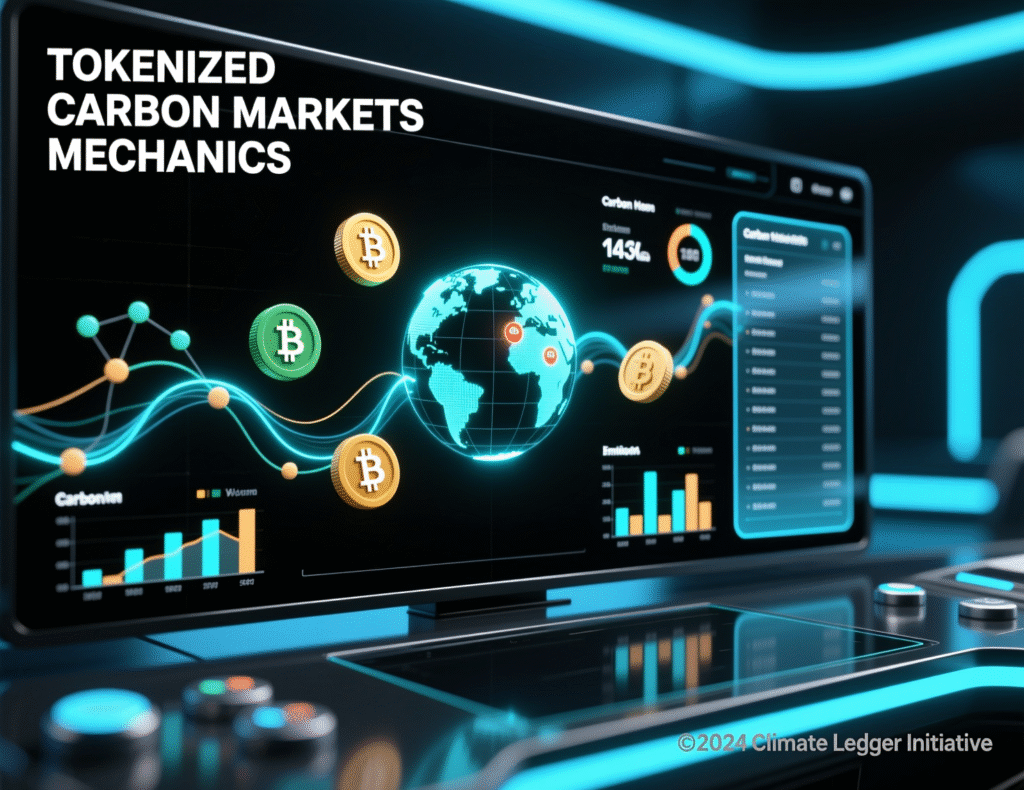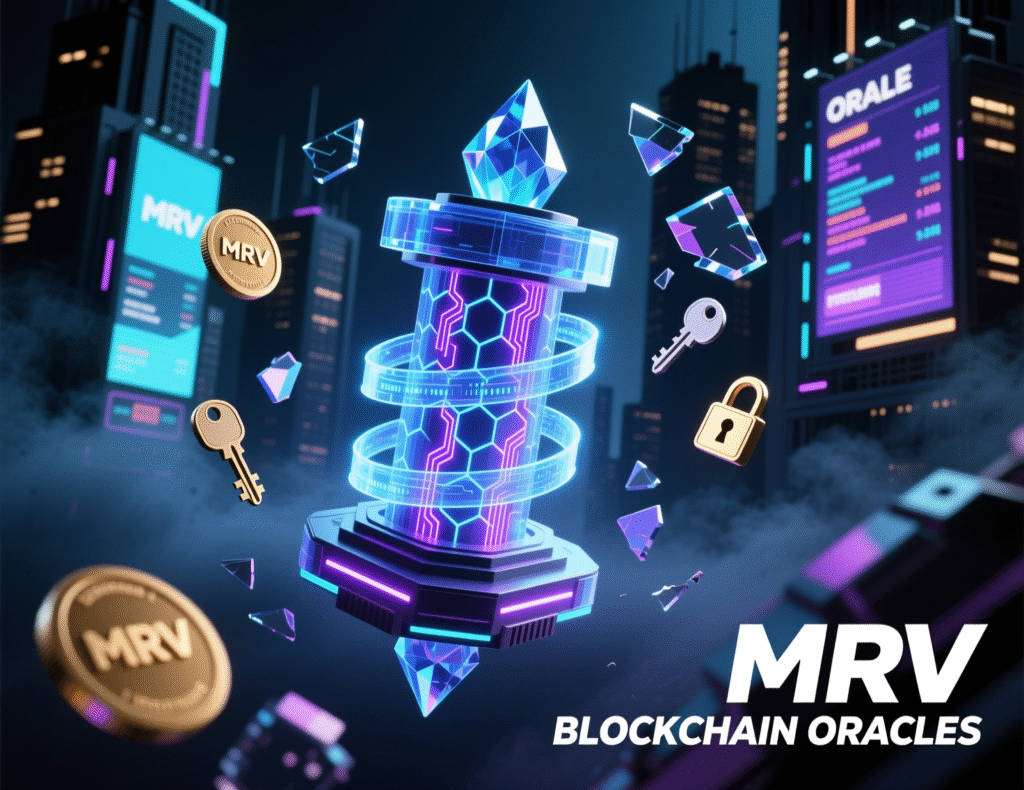ReFi Crypto Explained: The Practical Guide to Regenerative Finance
Introduction
ReFi regenerative finance in crypto is rising because capital is pivoting from “move fast” to “repair fast,” funding measurable climate outcomes instead of just yield. In short: ReFi uses blockchains to channel money into high-integrity environmental projects, and tokenized carbon credits let buyers verify provenance, price quality, and retire assets on-chain with traceable claims.
The shift from “move fast” to “repair fast” in Web3
The last cycle optimized for hyper-growth and yield. This one optimizes for outcomes. Scandals and a 2023 crash in many offset prices reset expectations: if Web3 wants mainstream adoption, it must deliver verifiable, positive externalities. That’s where regenerative finance (ReFi) in crypto and tokenized carbon markets come in—tying incentives to climate impact, not just APY.
Preview: What you’ll learn about ReFi, tokenization, and market integrity
This practical guide defines regenerative finance (ReFi) in crypto, compares it with DeFi, maps ReFi to the voluntary carbon market (VCM), explains tokenized carbon credit lifecycles and digital MRV, unpacks on-chain market designs and policy overlays (EU, UK, Singapore, US), reviews notable projects and enterprise pilots, and ends with a hands-on due-diligence checklist, governance tips, and implementation playbooks.
What Is Regenerative Finance (ReFi) in Crypto?
Direct answer
ReFi is the use of blockchain rails to fund, track, and reward activities that regenerate ecological and social systems think carbon removal, forest restoration, and resilient communities prioritizing positive externalities over pure yield. Unlike traditional DeFi, ReFi bakes impact into its core logic and claims framework.
ReFi vs. DeFi: Purpose-driven capital vs. yield-first systems
DeFi’s goal
Efficient, permissionless financial services, prioritizing liquidity and returns.
ReFi’s goal
Efficient, permissionless impact finance routing capital to projects that measurably remove/reduce emissions or regenerate ecosystems.
Example
A DAO that pools stablecoins to buy and retire high-quality removal credits, distributing proof-of-retirement receipts to participants.
Stat to know
The Integrity Council for the Voluntary Carbon Market (ICVCM) is labeling “Core Carbon Principles (CCP)”-aligned credits to raise quality and restore trust across the VCM. In May 2024, programs representing ~98% of the market by 2023 retirements received initial approval to pursue CCP labels.
Core pillars: Positive externalities, public goods funding, transparent incentives
Positive externalities
Funding projects that deliver real climate benefits (additionality, permanence). 2) Public goods: Open data, open tooling (e.g., digital MRV). 3) Transparent incentives: On-chain custody, programmatic retirements, and auditable claims. LSI: regenerative finance definition; digital carbon registry.
Example tools/entities
ICVCM’s CCPs and VCMI’s Claims Code guide corporate claims and integrity.
How ReFi maps to climate finance and the voluntary carbon market
ReFi interacts with the VCM by tokenizing credits from registries (e.g., Verra, Gold Standard) or issuing natively on-chain ecocredits (e.g., Regen Registry). The aim: reduce friction, enrich data, and make retirement a traceable, programmable event.
Tokenized Carbon Credits 101
Tokenization is the process of creating a digital twin of a carbon credit on a blockchain either by bridging credits from legacy registries or issuing them on an on-chain registry.

From issuance to retirement: Registry → tokenization → trading → burn/retire
Issuance
A project is verified by a program (e.g., Verra VCS, Gold Standard).
Tokenization
Credits are bridged (wrapped as tokens) or issued natively on-chain.
Trading/liquidity
Order books or AMMs discover prices; token baskets/pools aggregate supply.
Retirement/burn
Tokens are retired on-chain and mapped back to a unique claim so no one can double-use the benefit.
Reality check:
Registries have taken cautious stances to avoid double counting when credits move on- and off-chain, with policy updates and consultations since 2022.
Digital MRV: Oracles, sensors, and data attestations for integrity
Digital MRV (measurement, reporting, verification) combines satellite/IoT data with decentralized oracles to attest project performance. Oracles like Chainlink can deliver verified emissions or biomass data on-chain, enabling pay-for-performance smart contracts. OpenForest Protocol focuses on open, scalable MRV for forests.
Actionable tip
Look for MRV pipelines that cite data sources, sampling frequency, and validation logic; ask for tamper-evident audit trails (Merkle proofs, signed attestations).
On-chain registries vs. bridges: custody, provenance, and double-counting risks
On-chain registries (e.g., Regen Registry)
Issue and retire native ecocredits—clean provenance, no detour via legacy registries.
Bridges
Connect legacy registries to blockchains; risk arises if off-chain and on-chain states aren’t perfectly synced (e.g., retired off-chain but not locked on-chain).
Buyer checklist
Confirm one-to-one mapping (unique ID ↔ token ID), registry endorsement, and real-time status; require retirement receipts traceable to the original serial number.

On-Chain Carbon Markets & Mechanisms
Market design: order books, AMMs, baskets/pools, and liquidity routing
Order books
Good for precise pricing of unique vintages/methodologies.
AMMs
Improve liquidity and continuous pricing; used by ReFi protocols for carbon pools.
Baskets/pools
Aggregate credits (e.g., BCT—Base Carbon Tonne), improving fungibility but blending quality signals; newer designs allow thematic baskets (e.g., removals-only).
Example
KlimaDAO’s treasury-backed pools and routing improve price discovery for tokenized credits across chains and DEXs.
Pricing the differences: avoidance vs. removals, vintages, methodologies
Prices vary by impact type (avoidance vs. removals), vintage, and methodology quality. After a 2023 trust shock, higher-quality projects began commanding visible premiums, and ratings agencies report rising correlation between price and quality rating.
Stat
Platts’ nature-based contract (CNC) fell ~96% in 2023, highlighting the trust deficit, while later reporting and ratings show premiums for higher-rated credits.
Policy overlays: registry rules, labeling frameworks, and compliance touchpoints
ICVCM CCP labels
(program-level approval; methodology assessment ongoing) and VCMI Claims Code steer buyers toward credible claims.
EU
The Carbon Removal Certification Framework (CRCF) (Reg. 2024/3012) sets a common standard for certifying removals and soil emission reductions.
UK
Developing GGR and Power BECCS business models (CfD-style) and consulting on integrating removals into carbon markets.
Singapore
Project Guardian is advancing tokenization in wholesale markets, with FI pilots moving from PoCs to real-world use.
Takeaway
These overlays will shape claim language, credit eligibility, and data requirements especially for removals in the EU/UK.
Market Health & Controversies
What went wrong: the 2023 offset price drop and trust deficit
Investigations and critiques of legacy methodologies (especially older REDD+ projects) triggered a crisis of confidence. Spot prices for some nature-based contracts collapsed, and market value estimates fell sharply in 2023.
Result
Buyers demanded stricter standards, transparent claims, and better MRV.
Integrity fixes: tighter methodologies, ratings, and disclosure standards
ICVCM CCPs and VCMI Claims Code establish “what good looks like” across programs and corporate claims.
Ratings & analytics
(BeZero, Sylvera) add independent assessments; regulators (e.g., IOSCO) acknowledge their complementary role.
Disclosure upgrades
Programmatic retirement receipts and project-level data rooms (remote sensing, audit reports).
Stat/insight
Reuters reports an emerging positive correlation between rating and price; BeZero studies similarly track rating transitions and pricing effects.
The path forward: high-quality removals, standardized claims, and enterprise pilots
Expect segmentation: removals (DAC, BECCS, durable storage) priced at a premium; standardized claims (VCMI) and labels (ICVCM) guiding procurement; and bank-led settlement rails bridging corporate demand to vetted supply.
ReFi Projects & Real-World Use Cases
Protocols & infra: Toucan, KlimaDAO, Regen Network, OpenForest Protocol, Celo ReFi stack
Toucan Protocol
Bridging and infrastructure that catalyzed on-chain carbon markets.
KlimaDAO
Carbon pools (e.g., BCT), treasury-backed tokens, and liquidity mechanisms.
Regen Network
On-chain registry for science-backed ecocredits.
OpenForest Protocol:
Open MRV stack for forest projects.
Celo
Mobile-first L1 with an active ReFi ecosystem and grants supporting climate tooling.
Marketplaces & tools: Carbonmark, token baskets, analytics dashboards
Carbonmark
Offers on-chain liquidity and APIs for instant purchase and retirement; developers can integrate climate actions into apps.
Analytics & ratings
Sylvera and BeZero provide project-level data, ratings, and market reports.
Buyer action
Use marketplaces that show registry IDs, vintage, methodology, rating, and live liquidity.
Enterprise pilots: bank networks, tokenized settlements, and procurement workflows
Carbonplace (founded by nine global banks) is building settlement rails and connectivity for carbon transactions.
J.P. Morgan’s Kinexys announced pilots to tokenize registry-layer credits with partners like S&P Global and EcoRegistry pointing to native issuance/retirement on digital ledgers.
Singapore’s Project Guardian signals regulatory support for institutional tokenization relevant to future carbon credit settlement and collateralization.

Getting Started: How to Evaluate Tokenized Carbon
Due diligence checklist: provenance, MRV, ratings, liquidity, retirement mechanics
Provenance
Registry program (Verra, Gold Standard, Regen) and unique serial/ID.
MRV
Data sources (satellite/IoT), update frequency, attestation method (oracle provider), and third-party validation.
Ratings
Independent ratings (BeZero/Sylvera), plus methodology notes.
Liquidity
Where is it traded? AMM depth, order-book spreads, daily volume.
Retirement
On-chain burn/retire with receipt mapping back to the original credit; check double-use safeguards.
Governance & risk: KYC, custody, sanctions lists, and claim language
KYC/AML
Use platforms following Travel Rule-compliant onboarding for institutional accounts.
Custody
Institutional wallets with policy controls; segregate trading vs. retirement accounts.
Sanctions & lists
Screen projects and counterparties; monitor evolving rules (EU CRCF, UK GGR).
Claim language
Align with VCMI Claims Code; avoid “carbon neutral” unless criteria are met and disclosures are precise.
Implementation paths: treasury trials, sustainability-linked tokens, portfolio hedging
Treasury trials
Allocate a small % of treasury to removal-only baskets, retiring against Scope 3 categories with documented claims.
Sustainability-linked tokens
Tie protocol emissions (gas, compute) to automated withdrawals to purchase/retire credits via API.
Hedging
Use forward credits from reputable developers or offtake agreements to manage price/quality exposure.
Summary & Key Takeaways
ReFi in crypto
Channels capital to measurable climate outcomes, not just yield.
Tokenized carbon credits
Boost transparency and programmability; integrity hinges on MRV and one-to-one registry mapping.
Market quality
Is recovering around high-integrity credits, with ratings and labels guiding price signals.
Policy momentum
(EU CRCF, UK GGR) and enterprise rails (bank platforms, Project Guardian) are paving institutional adoption.
Act now
Use the due-diligence checklist, align claims with VCMI, and pilot removal-led procurement.
Looking to evaluate or prototype a tokenized carbon strategy without the buzzword haze? Mak It Solutions can help you design an integrity-first ReFi architecture, integrate digital MRV, and connect to bank-grade settlement rails. Get a free consultation today and turn sustainability goals into verifiable, on-chain outcomes.( Click here’s)
FAQs
Q : Is carbon credit tokenization regulated, and which jurisdictions matter today?
A : Tokenization itself is typically governed by existing financial, commodities, and data rules rather than a single “tokenization law.” For the credits, integrity frameworks (ICVCM’s CCPs) and claims guidance (VCMI) set quality and disclosure norms. The EU’s CRCF creates a certification system for removals/soil emission reductions, while the UK is developing GGR/BECCS business models to support negative-emissions supply. Singapore’s Project Guardian accelerates institutional tokenization under supervisory sandboxes. Together, these shape procurement, custody, and claims.
Q : How does digital MRV reduce greenwashing compared with traditional audits?
A : Digital MRV combines remote sensing/IoT with decentralized oracles, publishing data and attestations on-chain. That creates continuous, tamper-evident performance records rather than infrequent PDFs. Buyers can see what data informed issuance, when it was updated, and how it maps to a claim/retirement. Look for oracle providers (e.g., Chainlink) and MRV platforms (e.g., OpenForest Protocol) that disclose data sources and validation pipelines.
Q : What’s the difference between tokenized “pools/baskets” and single-project credits?
A : Single-project tokens preserve granular quality signals (methodology, location, vintage), useful for tailored ESG goals. Pools/baskets (e.g., BCT) improve liquidity and fungibility but blend attributes; newer baskets target specific segments (e.g., removals only). For corporate claims, document basket criteria, underlying constituents, and retirement receipts.
Q : Can on-chain carbon be retired for corporate claims or only for trading?
A : Yes, retirements can be executed on-chain and mapped to off-chain records when the token standard and registry integration support it. To make a corporate claim, align with VCMI and ensure retirements reference unique serials, methodology, and project IDs ideally with ICVCM-aligned program labels as they roll out.
Q : How do removals (BECCS, DAC) compare to avoidance credits in on-chain markets?
A : Removals generally command higher prices due to durability and policy preference (EU CRCF, UK GGR focus). Avoidance credits can still play roles in portfolios but face stricter scrutiny. Expect more removal-only baskets, targeted procurement, and standardized claim language favoring durable climate impact.

